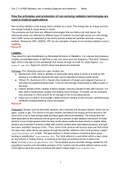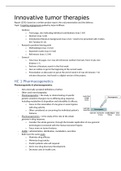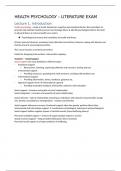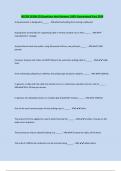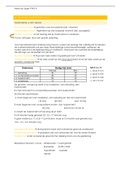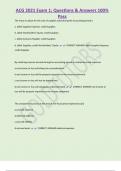Unit 21 LA A&B Radiation use in medical diagnosis and treatment Name
How the principles and production of non-ionising radiation technologies are
used in medical applications:
Non-ionising radiation is the energy that is emitted as a wave. This energy has no charge and has
not enough energy to cause atoms to ionise.
The principles are that there are different technologies that can detect and emit waves, the
ultrasound waves are reflected by different types of material, focused light waves can emit energy
and in MRI, waves are absorbed by the atoms and the subatomic particles and then, energy is
emitted. Ultrasound, MRI, LASERs, IRT, etc are examples of types of non-ionising radiation used in
medicine.
Part A.P1
LASERs:
They stand for Light Amplification by Stimulated Emission of Radiation. It is a device that produces
a highly concentrated beam of light that is only one colour and one frequency. They emit “coherent
light, which is the light of one wavelength that travels through and with its crests aligned” (Quia -
Chapter 13 - Light, 2021). Figure 01 and 02 shows how lasers are produced.
Principes: The chemicals used as a gain medium are:
● Neodymium-YAG: Used in dentistry to treat softer parts within a cavity of a tooth as the
enamel is not affected because the laser can be adjusted to reduce power levels.
● Yttrium (Y), Aluminium (Al) + Garnet (Ga): treatment of benign and malignant tumours in
bronchial and gastrointestinal areas. It can be sent through endoscopes to difficult parts of
the body.
● Carbon dioxide (CO2): sealing of blood vessels, reducing spread of cells with tumours, it is
also used in facial plastic surgery and sealing nerve endings. The beam can be narrowed
very precisely so, there should be no damage to the surrounding tissues.
● Argon (Ar): Is used in microsurgery, tattoo removal, treating of skin tumours, ophthalmology,
treatment of gastrointestinal ulcers and polyps.
Part A.P1
Production: Energy, such as electricity, photons, etc is induced into the gain medium, which can be
glass, crystal or gas. The atoms in the gain medium will absorb the energy and the electrons will
move from a low to high energy state and back again almost immediately. The energy that has
been absorbed by the electrons will be given off as a photon of light radiation (emission). Emitted
photons move at high speed inside the tube as the space inside the laser device is sealed. More
photons are produced if photons collide with another excited atom (stimulated emission) and light
has been ‘amplified’ because of this. “Then, some of the photons will bounce back and forth inside
the laser tube, while others will escape through the partially reflective mirror and produce a beam”
(Lecture Demonstrations, 2021) of light. “The gain medium is where emission of photons takes place,
leading to amplification” (Laser construction, 2021). The “total reflector is used either within a laser cavity
as rear mirrors or folding mirrors, or external to the laser as bending mirrors to deliver the
beam”(Total Reflector Mirror and Opto-Electronic, 2021). The excitation source provides energy needed for the
population inversion and stimulated emission of the “system and the partial reflector allows some
of the light to leave the cavity to produce the laser's output beam”(Laser construction, 2021).
1
,Unit 21 LA A&B Radiation use in medical diagnosis and treatment Name
Figure 01
Figure 02
Part A.P1
Uses: Can be used for cosmetic surgery, record and read music on CDs, store checkout lines, cut
and weld metal, surgery, medicine and measurement.
● LASEK- Laser Assisted In Situ Keratomileusis is a laser surgery that removes a part of the
cornea to reshape it permanently for a better vision. “During the procedure, a surgeon will
create a precise corneal flap using a laser, then the surgeon pulls back the flap to expose
2
, Unit 21 LA A&B Radiation use in medical diagnosis and treatment Name
the underlying corneal tissue and the excimer laser reshapes the cornea in a unique
pre-specified pattern for each patient” (Themes, 2021).
● Laser lithotripsy- procedure where kidney stones are broken apart in the urinary tract. “It is
done under a ureteroscope passed into the tubes in the urinary tract. The laser then breaks
the kidney stones into pieces so that they can be removed by the surgeon or move out of
the body with urine”(Laser Lithotripsy | Winchester Hospital, 2021).
● Lasers to remove tumours: “Laser therapy uses a very narrow and precise beam of light to
destroy cancer cells or to cut out tumours without damaging surrounding
tissues”(Encyclopaedia and cancer, 2021). “This therapy is often given through a thin, lighted tube
that is put inside the body. Thin fibres at the end of the tube direct the light at the cancer
cells” (Encyclopaedia and cancer, 2021).
Part A.P2
MRI:
It stands for Magnetic Resonance Imaging and is used for internal imaging, the electromagnetic
fields excite hydrogen atoms to release radio waves that are reflected and detected. It can
diagnose brain strokes, brain bleeds and interior injuries. Before an MRI, all metal objects need to
be removed and a contrast dye could be given to the patient to aid the scanning.
It’s probably the most well-known technique that uses nuclear energy, but uses the fact that some
nuclei have magnetic fields around them instead of radioactive elements. Hydrogen atoms are the
type of atoms detected in MRI, therefore, water and hydrogen containing compounds are the
molecules an MRI can detect. When an electromagnetic field is turned on, the nucleus aligns with
the magnetic field and when the electromagnetic field is turned off, the nucleus flips back to regular
stare and emits an electromagnetic field. Spins are a fundamental part of atoms, different atoms
have different spins and protons have spin, meaning they act like little magnets with a North and
South pole. MRI affects the spin of photons, MRI is only used to detect hydrogen because
hydrogen atoms are the only atoms that are just one single proton and hydrogen can be found in
the body because it is part of a water molecule, so it basically detects water molecules in the body.
When there are no external magnetic fields around the protons, their spins point to different
directions and in an external magnetic field, the protons spline align with the field lines, this motion
is called precession. Resonance is when the amplitude of a vibration increases when the protons’
natural frequency of vibration matches some outside frequency by firing radio waves at it. This
causes the spin of the protons to increase greatly, because they have more energy to make them
spin more. These protons in our body are exposed to a burst of radio waves with a frequency
matching the resonance of protons, here resonance means that these protons absorb a photon of
energy and jump to a higher energy state. “The radio waves are then switched off so that the
protons go back into their lower energy state and they release the energy as radio waves as they”
(How Does an MRI Scanner Work?, 2021) return to their normal spin state. The rate of relaxation helps tell us
the type of materials around the protons.
Principles: Our bodies are 60% made of water, which consists of hydrogen and oxygen molecules.
Hydrogen atoms have small particles called “protons in their centre that are like very little magnets
and are very sensitive to magnetic fields” (Campbell Pharmacy Portrush | A family Run Pharmacy » Magnetic resonance
imaging scan, 2021). “When a patient is laying on a patient table during an MRI scan, the protons in the
body line up in the same direction because of being under the powerful scanner magnets” (Campbell
Pharmacy Portrush | A family Run Pharmacy » Magnetic resonance imaging scan, 2021) . “Then, soft waves of
radiofrequency are sent in the body parts that have to be scanned, knocking the protons out of
3

